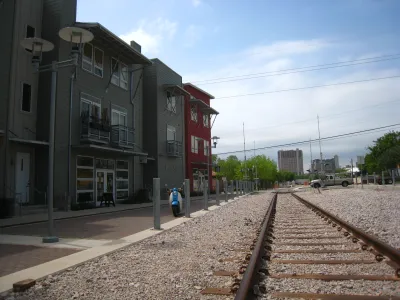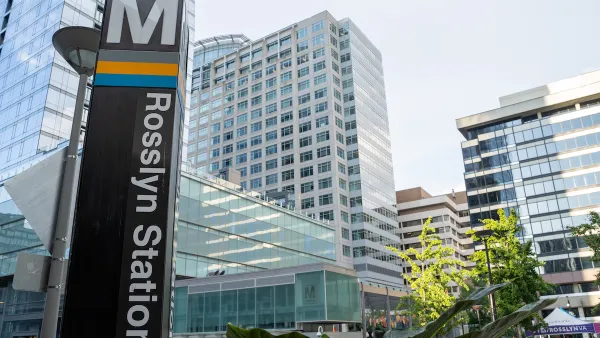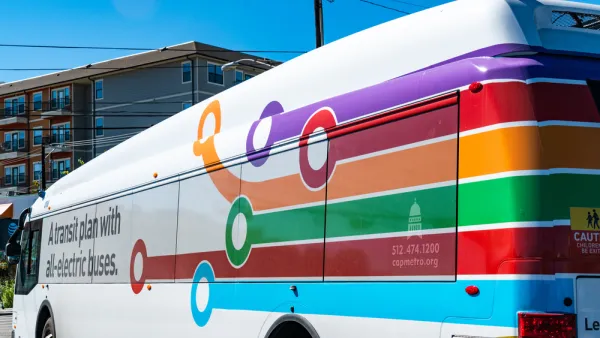New research about the importance of transit in building transit oriented communities has some surprising results that may have significant implications for how we plan and build in the future.

Writing in The Urban Edge, Andrew Keats reports on new research from UC-Berkeley professor Daniel Chatman that looks at what makes a successful transit oriented development. Surprisingly, he finds that proximity to transit (specifically light rail stations) has little impact on the success of TOD projects.
The study focused on people living within 0.4 miles of transit and in homes less than 7 years old, "essentially a proxy for those who live in 'transit-oriented development'." What it found was that those people owned fewer cars and were less likely to drive to work. However, the placement of a transit station nearby wasn’t the most influential factor in creating successful TOD development.
Rather, the most important factors were the scarcity of parking and the number of bus stations in the vicinity. Neighborhoods with little parking and lots of bus service cut car ownership by 44 percent.
“When all of these other factors were considered (bus access, parking availability, job and population density, and housing type), rail access had no effect on auto ownership,” Chatman wrote.
…
What really mattered was scarce parking, ample bus service, smaller apartments, more rental apartments, more stuff within walking distance, and being close to downtown jobs.
Chatman writes that cities without those, expensive light rail stations can still have the successful type of neighborhoods that transit oriented development has promised, but changes to policy need to take place. Among Chatman's suggestions, reducing parking requirements for new projects and encouraging density, while planning for amenities such as grocery stores, can achieve many of the goals espoused by TOD advocates.
FULL STORY: Why Transit Oriented Development Doesn’t Need Transit

National Parks Layoffs Will Cause Communities to Lose Billions
Thousands of essential park workers were laid off this week, just before the busy spring break season.

Retro-silient?: America’s First “Eco-burb,” The Woodlands Turns 50
A master-planned community north of Houston offers lessons on green infrastructure and resilient design, but falls short of its founder’s lofty affordability and walkability goals.

Delivering for America Plan Will Downgrade Mail Service in at Least 49.5 Percent of Zip Codes
Republican and Democrat lawmakers criticize the plan for its disproportionate negative impact on rural communities.

Test News Post 1
This is a summary

Test News Headline 46
Test for the image on the front page.

Balancing Bombs and Butterflies: How the National Guard Protects a Rare Species
The National Guard at Fort Indiantown Gap uses GIS technology and land management strategies to balance military training with conservation efforts, ensuring the survival of the rare eastern regal fritillary butterfly.
Urban Design for Planners 1: Software Tools
This six-course series explores essential urban design concepts using open source software and equips planners with the tools they need to participate fully in the urban design process.
Planning for Universal Design
Learn the tools for implementing Universal Design in planning regulations.
EMC Planning Group, Inc.
Planetizen
Planetizen
Mpact (formerly Rail~Volution)
Great Falls Development Authority, Inc.
HUDs Office of Policy Development and Research
NYU Wagner Graduate School of Public Service




























